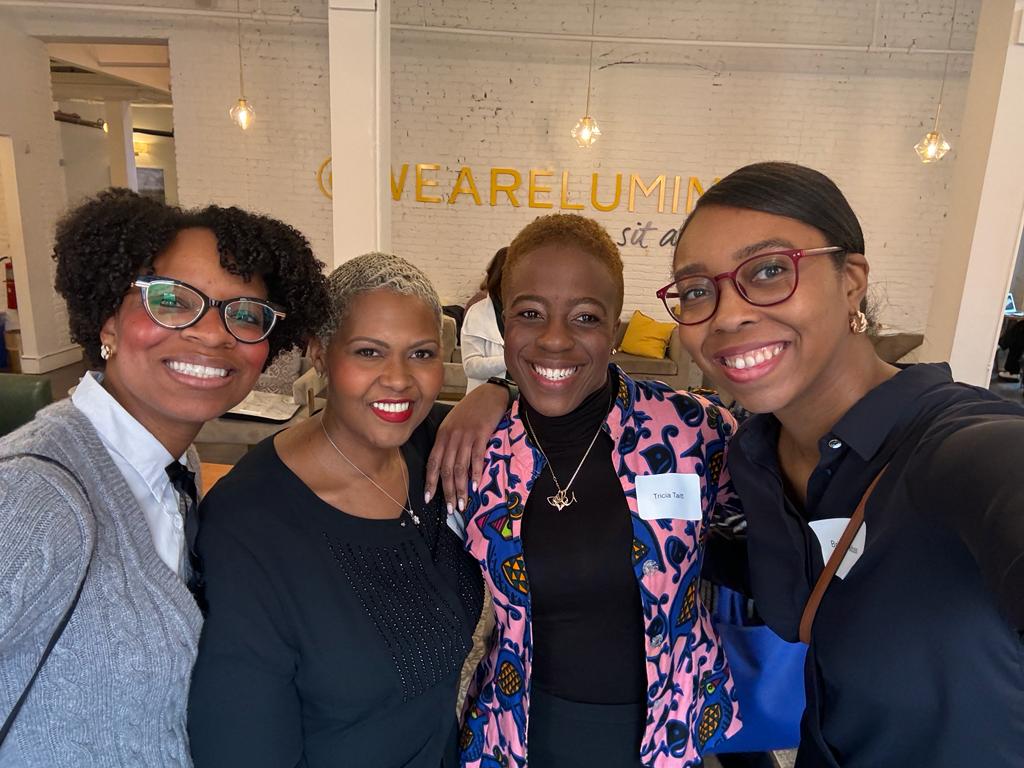Intuit Quickbooks commissioned a survey of 2,069 Black business owners with 0-100 employees to uncover how the fastest growing small business owner market is fairing in this uncertain economic environment. One of the insights brought to life is that “despite the pressure of inflation, Black businesses still aren’t charging their worth.”
2024 data shows that “inflation is number one on the list of challenges for Black small business owners. 30% said inflation is their greatest challenge, compared to the 16% who said competition from larger businesses or attracting customers (15%) is the biggest hurdle.”
Despite that, 57% of Black business owners believe they’re still undercharging for their products and services — but they don’t plan to raise prices anytime soon. Of those businesses, 44% say customer sensitivity to inflation is the primary reason they aren’t raising prices.
Do you feel the same way? Is your empathy for customers preventing you from making one of the most important decisions in your business’s life in this economy?
While these are statistics highlighting an issue for Black business owners in the current environment, I suspect many of you are trying to justify or convince yourselves of the need to increase prices.
The truth is, there are ways to strategically increase prices that will still impact your bottom line and allow you to charge your worth. Clients may not even care that you raised prices, but you won’t know until you communicate the increase and listen to feedback.
In my book, Dancing with Numbers, I write about using the four Ks to unlock the right price, make more money, and increase profits: Know your customer. Know your competitors. Know your numbers. Know your worth.
Know Your Customer
Use a customer-led approach instead of a “you”-led approach. Focus on what the customer wants and values, rather than offering a product and service you think customers want.
Mike B., an artist-turned-restaurant owner from Chicago, was looking for ways to increase his profit margin. Profit margin is the percent of revenue left over after paying for the cost of goods or services (supplies, materials, ingredients, labor, packaging, shipping and delivery).
He reviewed the sales over time for certain foods and beverages and realized the Sparkling Roses drink was very popular. It was an alcoholic beverage made with simple ingredients and cost very little to make.
The problem was that Mike and his staff weren’t proud of the drink. “We resented the fact that it was on the menu because we were artists who created amazing craft cocktails. Sparkling Roses was a pedestrian drink.” But when Mike saw how much money the beverage made, he used cheaper ingredients, increased the portion size, and increased the price.
He did the same thing with a special burger customers loved – paired down the number of toppings and increased the price of the burger. During the summers, lines were out the door clamoring for that burger and the Sparkling Roses drink, which turned into a tremendous increase in profits for Michael’s business.
Know Your Competitors
The second way to unlock the right price and make more money is to know your competitors, both direct and indirect – and do some research on how their offering is different from yours.
Perhaps your product/service, packaging, customer service, client experience is superior to that of your competitor and therefore, commands a higher price. Don’t assume your competitor’s pricing is the gold standard.
Instead highlight what makes your product/service superior relative to that of the competitors and work on improving the areas where your product/service comparatively falls short. Focus on what you can do to increase perceived value for your customer, then a price increase will flow smoother.
If competitor prices are not easily visible or available, send someone on your team to investigate, act as a customer and get a sense of their pricing and what customers value about the competitor’s product/services. Perhaps you’ll learn something from them for the benefit of your own business.
Know Your Numbers
The best way to figure out if you are charging enough is by using the break even approach to figure out the minimum price to charge to cover overhead (payroll, rent, utilities, travel, office expenses) and variable costs of producing a good or service.
An IT services company providing remote IT-managed services for doctor’s private practice chains has the following costs.
Software and cyber security licensing costs per computer/printer serviced: $12
Average labor costs per computer serviced: $65
Total annual fixed costs: $250,000
To service 2,400 computers and printers, the break-even price = ($250,000 divided by 2,400 computers) + $77 direct costs = break-even prices of about $181 per computer serviced.
These calculations become a bit more complicated when you factor in multiple products and services. But the point remains the same: pricing can really impact profitability if you control operating expenses and direct costs.
Know Your Worth
I believe we are all created with unique talents, character traits, innate abilities and passions. We have an inherent secret sauce that has been influenced by our experiences. Leverage all of who you are and all of what your business represents in determining pricing.
If you have tremendous experience, you’ve been in the industry/function for a long time, and you add value to customers and clients, you can charge a slight premium. But if you are new to the industry, start off at the lower end of the market range and then gradually increase to and above market rate.
Sometimes knowing your worth means knowing when to say “no.” When you started your businesses, gaining as many clients and revenue as possible was important for survival. But once business has been stabilized, it is okay to be more selective about clients that don’t fit the target profile.
Redirect them to peers in your industry that are a better fit. That simple act of kindness may turn into a referral from the same person to a more appropriate client..
In my book “Dancing with Numbers,” I share more actionable steps on how to grow profits beyond using price as a lever. But if you are going to use pricing as a strategy for growing profits then do follow the formula above – prioritize customer preferences, conduct thorough competitor analysis, calculate break-even points, and recognize your own value in the marketplace.
For a deeper dive on the 4 K’s and pricing your worth, order the audiobook or copy of Dancing with Numbers on Amazon.
Here’s to charging your worth,
Tricia

Tricia Taitt is the CEO and Chief Financial Choreographer of FinCore. She holds an M.B.A from The Fuqua School of Business of Duke University, and a BS in Economics with a Finance concentration from The Wharton School at the University of Pennsylvania. For over 20 years, she’s been a finance professional. Half of the time was spent working on Wall Street while the other half was spent in the trenches side by side with small business owners. As a result of working with FinCore, clients have been able to take control of their numbers and feel more confident in their ability to make decisions, while increasing profits by 10% and building a cash stash to invest in growth. Follow Tricia on LinkedIn and Instagram.

